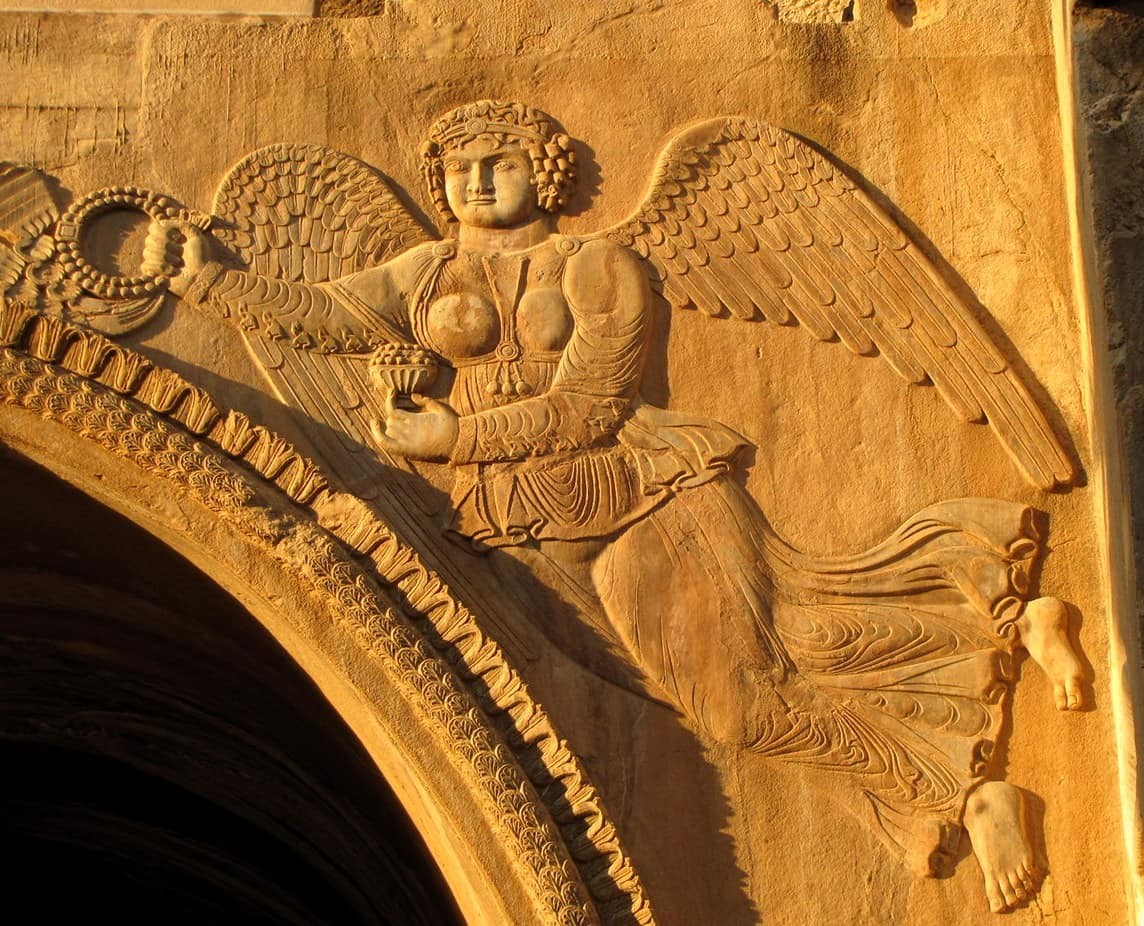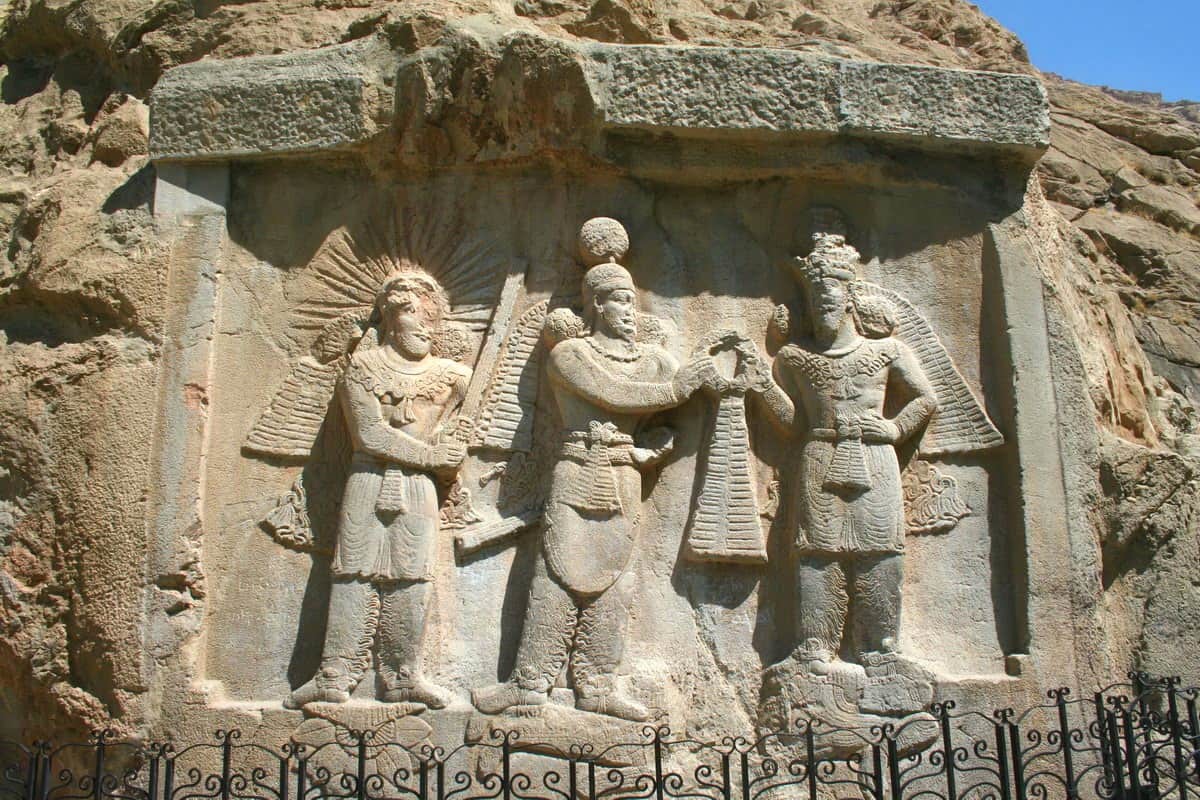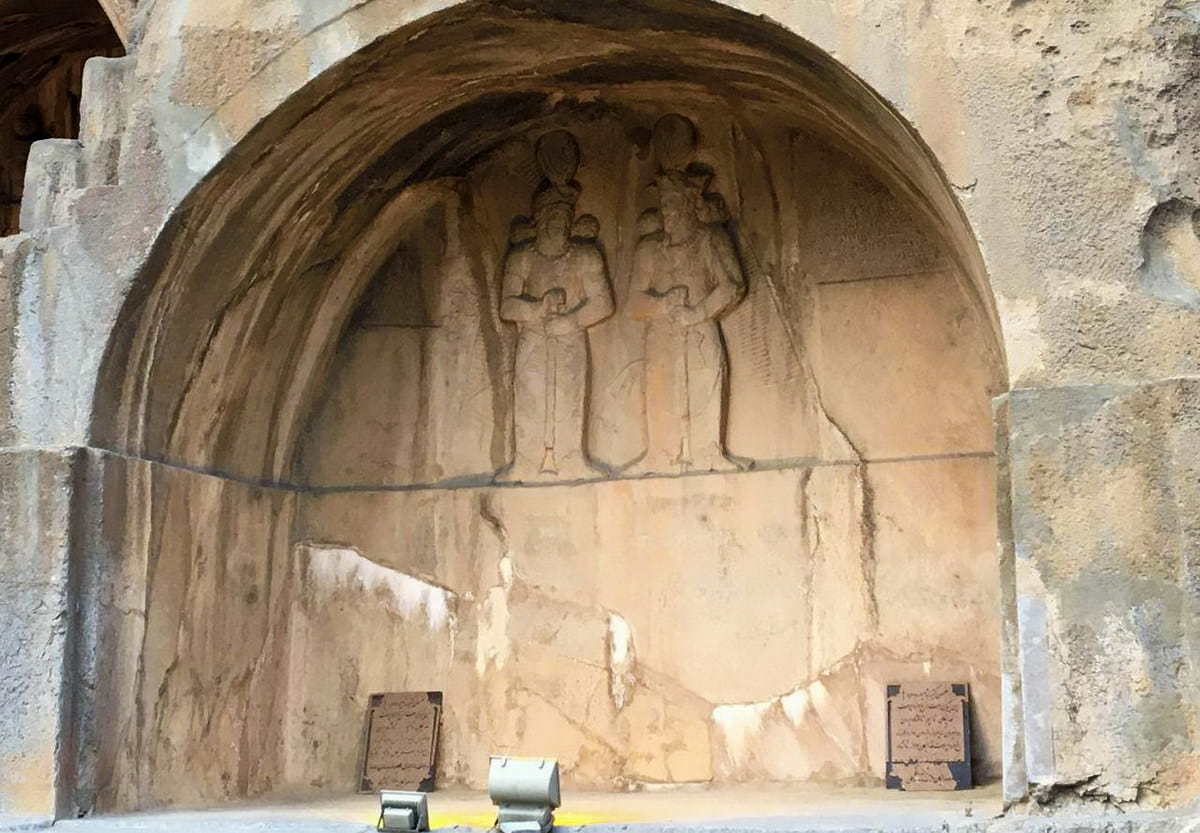Taq Bostan
Taq Bostan which is a complex of cave paintings and inscriptions, is located in the city of Kermānshāh (region of the same name) at the foot of the mountain of the same name and next to a spring.
This historical complex dating back to the Sassanid era and according to some to before Christ, has a remarkable historical and artistic value. Tāq-e Bostān which is located between the Silk Road, in the dialect of Kermānshāh "Tāq veh sān" and Tāq basān "means" stone arch ".
In this complex that was divided into three main parts: relief painting of the investiture of Artaxerxes II (380-383) Tāq-e bozorg (large Iwan dating back to the era of Khosrow Parviz, 590-628) and Tāq-e kuchak (Iwan small relative to the relief image of Shapur III 380-383) -unite and gray-colored stone, have been excavated in the mountain historical scenes such as: the investiture of Khosrow Parviz, Artaxerxes II, Shapur II, Shapur III, inscriptions rupestri in pahlavi calligraphy, the rite of wild boar hunting, playing musical instruments, etc.
This complex has undergone natural damage in the various eras such as: land movement, the growth of moss in the cracks of monuments and human interventions such as: the addition of cave paintings from the qajaro period, an inscription in calligraphy Nastaliq, the Ma'sudieh palace etc.
The archaeological site of Taq-e Bostan is the most important tourist attraction of Kermānshāh for the locals, for the Iranians and for foreign tourists and has a worldwide reputation so much that even writers, historians, explorers, travelers and painters of the world have described and depicted him.










